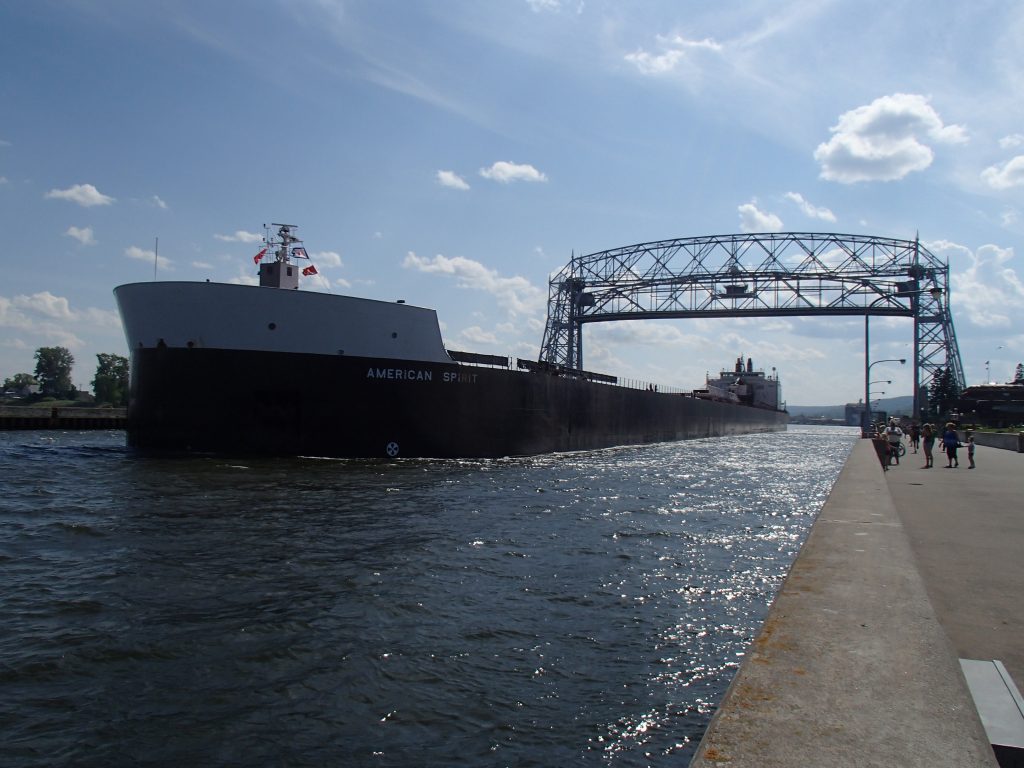“Our Environment, Our Waterways”: Top Issues for the Great Lakes
To see its environmental future, southeast Michigan can look upstream, into the Great Lakes

To predict southeast Michigan’s environmental future, look upstream.

That’s what Dave Spratt, chief executive officer of the Institute for Journalism and Natural Resources, did when he joined WDET’s Sandra Svoboda at the station’s event “Our Environment, Our Waterways,” held earlier this fall at the Grosse Pointe War Memorial. The program also included discussions with attorneys, community environmental advocates and students.
Spratt identifies three particular issues that are concerns in other parts of the Great Lakes and affect Detroit to varying extents:
Invasive Species
“They’ve been around for a while, there are nearly 200 invasives in the Lakes now. They’re still finding new ones,” Spratt says.
Previous coverage from WDET on invasive species:

Lake Erie Sea Lamprey Population Swells to an Estimated 15,000
Fed Biologists Won’t Give These “Suckers” and Even Break (with video)
Belle Isle Nature Tour: A Tour of the Park’s East End (with photos, map and discussion about efforts to promote wildlife restoration)
Michigan Running a $3.6 Million Grant Program to Fight Invasive Species
EPA Facing Trouble Over Clean Water Act and Ballast Water Permits
Legacy Pollutants

In previous decades, hazardous materials were discharged from industrial sites into the Great Lakes system and often settled into riverbeds and the bottoms of harbors and lakes. That old pollution remains, continuing to contaminate waterways and food chains.
“Green Bay has them, Duluth has them, the Canadian side certainly has its share,” Spratt says. “Detroit is certainly not unfamiliar with them.”
Previous Coverage from WDET on legacy pollutants:
Reports Give Detroit Failing Air-Quality Grade
Michigan DEQ Proposing Plan to Reduce Sulfur Dioxide Emissions in Southwest Detroit
Conservators Making Significant Progress on River Raisin Recovery Efforts
Climate Change

As winters get warmer and less ice forms, the water levels of the Great Lakes decrease. An increased frequency of severe storms changes the timing of water flow, sometimes causing flooding. Warmer water temperatures affect the ecosystem and wildlife.
“We’re still trying to figure out how precipitation affects the Lakes long term,” Spratt says. “Those issues show up everywhere in different ways.”
Previous WDET coverage on climate change:
Detroiters Working for Environmental Justice on Climate Change in Detroit
Southeast Michigan’s Environmental Risks
US Seeks Cut in Greenhouse Gasses From Farms, Forests
At IJNR, Spratt helps host expeditions for journalists from around the country, and he enjoys bringing them to the Midwest for their first time.
“I love to watch someone from the West Coast especially, also the East Coast or anyplace who hasn’t seen the Great Lakes before, just walk up and see it for the very first time. It’s a little funky shape on a map until you actually see it,” he says.
While concerns about climate change, pollution, fracking, water issues and other issues are at the top of the environmental agenda, Spratt also has concerns about the media environment.
“Newsrooms are shrinking, the number of reporters doing the job is smaller so there are a lot more freelancers out there. It really is a challenge,” Spratt says. “The biggest challenge is just trying to fill the spaces with knowledge rather than rhetoric and knowledge that have kind of filled the vacuum of this shrinking journalism industry.”
Click on the link above to hear the full audio of the conversation.
